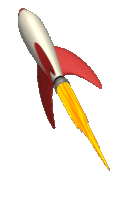SPACE / SOLAR SYSTEM THEMED BABY NAMES
Baby Names are here to help you find that perfect baby name. Use this space themed baby names page to search for baby names that you may be interested in. Space and solar system related names that can be used as baby names.
Search our other baby names by theme pages here. Also browse by alphabet here, or browse our baby names by origin pages here.
Search our other baby names by theme pages here. Also browse by alphabet here, or browse our baby names by origin pages here.
SPACE / SOLAR SYSTEM THEMED GIRL NAMES
- Andromeda: Its galaxy was named after a princess in Greek mythology, and means "ruler of man".
- Amalthea: Moon of Jupiter, surface of large craters and mountains.
- Ariel: The brightest moon of Uranus.
- Astrid: Swedish Space Corporation's first microsatellite.
- Aurora: A natural light display in the sky (from the Latin word aurora, "sunrise" or the Roman goddess of dawn), predominantly seen in the high latitude (Arctic and Antarctic) regions.
- Belinda: Ninth moon of Uranus, part of the Portia group of satellites.
- Bellatrix: Star in the Orion constellation.
- Bianca: A small moon of Uranus, named after the most desirable character in William Shakespeare's The Taming of the Shrew.
- Callisto: The name of the third-largest moon in the universe comes from the nymph love interest for Zeus in Greek mythology. Shorten to Calli or Callis.
- Calypso: This moon of Saturn was personified as a Queenly nymph in Greek mythology.
- Carina: Constellation containing Canopus, the second-brightest star in the sky.
- Cassiopeia: This constellation, named after beautiful figures in Greek mythology. Shorten to Cassie or Cass.
- Celeste: From celestial, meaning heavenly.
- Ceres: Dwarf planet in the inner solar system, may contain pure water ice.
- Cordelia: Inner moon of Uranus.
- Cressida: A moon of Uranus, named after a character in William Shakespeare's "Troilus and Cressida".
- Despina: Inner satellite of Neptune, also called Neptune V.
- Elara: It's a moon of Jupiter and one of Zeus's lovers.
- Faye: Comet in the Jupiter family.
- Halley: The only short-period comet that can be clearly visible by the human naked eye from Earth and can appear twice in the human lifetime.
- Helene: Moon of Saturn, discovered in 1980.
- Juliet: You might know it from William Shakespeare's Romeo and Juliet, but did you know it's also a moon of Uranus? Shorten it to Julie or Jules.
- Larissa: Fifth moon of Neptune.
- Leda: Moon of Jupiter, one of Zeus's lovers.
- Libra: This constellation in the eastern sky is also part of the zodiac.
- Luna: Latin for moon.
- Lyra: This harp-like constellation in the northern hemisphere is named after the lyre in the ancient Green myth of Orpheus.
- Maia: A blue-giant star in the Taurus constellation
- Miranda: One of Uranus's five major moons and is named after Miranda from William Shakespeare's The Tempest.
- Moon: The Moon (Latin: Luna) is Earth's only natural satellite.
- Nova: An explosion in a white dwarf, which causes a sudden increase in the brightness of a star, and means "new star".
- Ophelia: A small moon of Uranus and is based on a character in William Shakespeare's Hamlet.
- Pandora: A moon of Saturn, named after the first woman on earth in Greek mythology.
- Phoebe: A moon of Saturn. In Greek mythology "radiant, bright, prophetic" Phoebe was a goddess.
- Portia: This large moon of Uranus was named after a character in William Shakespeare's The Merchant of Venice.
- Rhea: One of Saturn's moons.
- Rosalind: Moon of Uranus, discovered in 1986.
- Seren: Welsh origin, means star.
- Star: An adorable middle name for a rising superstar. Alternatively, Stella makes for a great and very feminine nickname.
- Stella: Latin for star, variations Estelle, Estella.
- Titania: The largest moon of Uranus and the queen of fairies in William Shakespeare's A Midsummer Night's Dream. Shortened to Tania.
- Thebe: Red-coloured inner satellite of Jupiter.
- Vega: The fifth brightest star in the night sky, known as the "Harp Star".
- Venus: The second-closest planet to the Sun was named for the Roman goddess of love and beauty.
SPACE / SOLAR SYSTEM THEMED BOY NAMES
- Altair: The 12th brightest star in the sky and the brightest star in the constellation Aquila the Eagle. It's a unisex name, but has been more popular with boys in the past.
- Archer: This is the half-man, half-horse Sagittarius grouping of stars. The name Archer is strong and powerful. Archie could be a nice alternative.
- Aries: The constellation that depicts a ram and is the representation of the Golden Fleece in Greek mythology. Alternatively change to Ares or Arese.
- Aten: Asteroid group.
- Atlas: The famous Greek Titan that held up the celestial sphere, and is known as the titan of astronomy and navigation.
- Caelum: Faint constellation of stars in the southern hemisphere.
- Castor: The brightest star in the constellation Gemini and together with his brother Pollux, they are known as "The Great Twins" in Greek mythology. Good twins name.
- Columba: A constellation named after the dove that warned Noah about the upcoming flood. Callum is an alternative.
- Cosmos / Cosmo: The entire physical universe: "The world."
- Deimos: One of the moons of Mars.
- Draco: Latin for "dragon" this constellation was inspired by the dragon that Hercules slayed during his 12 labors. A variation is Drake.
- Eos: Family name of a belt of asteroids.
- Galileo: The famed Italian astronomer who searched the heavens, and was the first to discover the phases of Venus, the moons of Jupiter (named the Galilean moons).
- Halo: Galactic halo.
- Holmes: This comet was once known as the largest object in the solar system. .
- Hunter: The constellation Orion was personified as an adventurous hunter in Greek mythology and in Homer's epic Odyssey.
- Janus: A moon of Saturn named after the two-faced Roman god. It's the masculine version of January.
- Jupiter: The largest planet in the Solar System, named after the main god in Roman mythology (the equivalent of the Greek Zeus). The female version, Juno. Shorten to Jupe.
- Kale: Moon orbiting Jupiter.
- Leo: This is one of the earliest recognized constellations and contains many bright stars.
- Mars: The fourth planet from the sun was named after the Roman god of war, and is often referred to as the "Red Planet".
- Mercury: The planet closest to the Sun, named after the Roman god who was the flying messenger to the gods. Shorten to Merc.
- Nash: A common name for the star Gamma Sagittarii, which is located in the constellation Sagittarius, and is located in the spout of "The Teapot."
- Oberon: A large moon of Uranus, named after the king of the fairies in William Shakespeare's A Midsummer Night's Dream.
- Orion: A constellation that is named after the hunter in Greek mythology.
- Pallas: Family of asteroids.
- Perseus: A constellation in the northern sky that is named after the Greek god who defeated Medusa and saved Andromeda.
- Phoenix: A small constellation in the southern sky named after the mythical bird of rebirth, and comes from the Greek name for "crimson."
- Pluto: A dwarf planet in the Solar System, named after the god of the underworld in Greek mythology.
- Proteus: One of Neptune's moons.
- Rigel: A blue super-giant star in the constellation Orion that's the most important navigation star when travelling the oceans.
- Sirius: The brightest star in the night sky, and means "glowing" or "scorcher" in Ancient Greek.
- Solar: Related to the sun, the star at the center of the solar system.
- Themis: Asteroid family.
- Thule: Large asteroid discovered in 1888.
- Triton: Moon orbiting Neptune.
- Wolf: Lupus in Latin, constellation in the southern sky.


